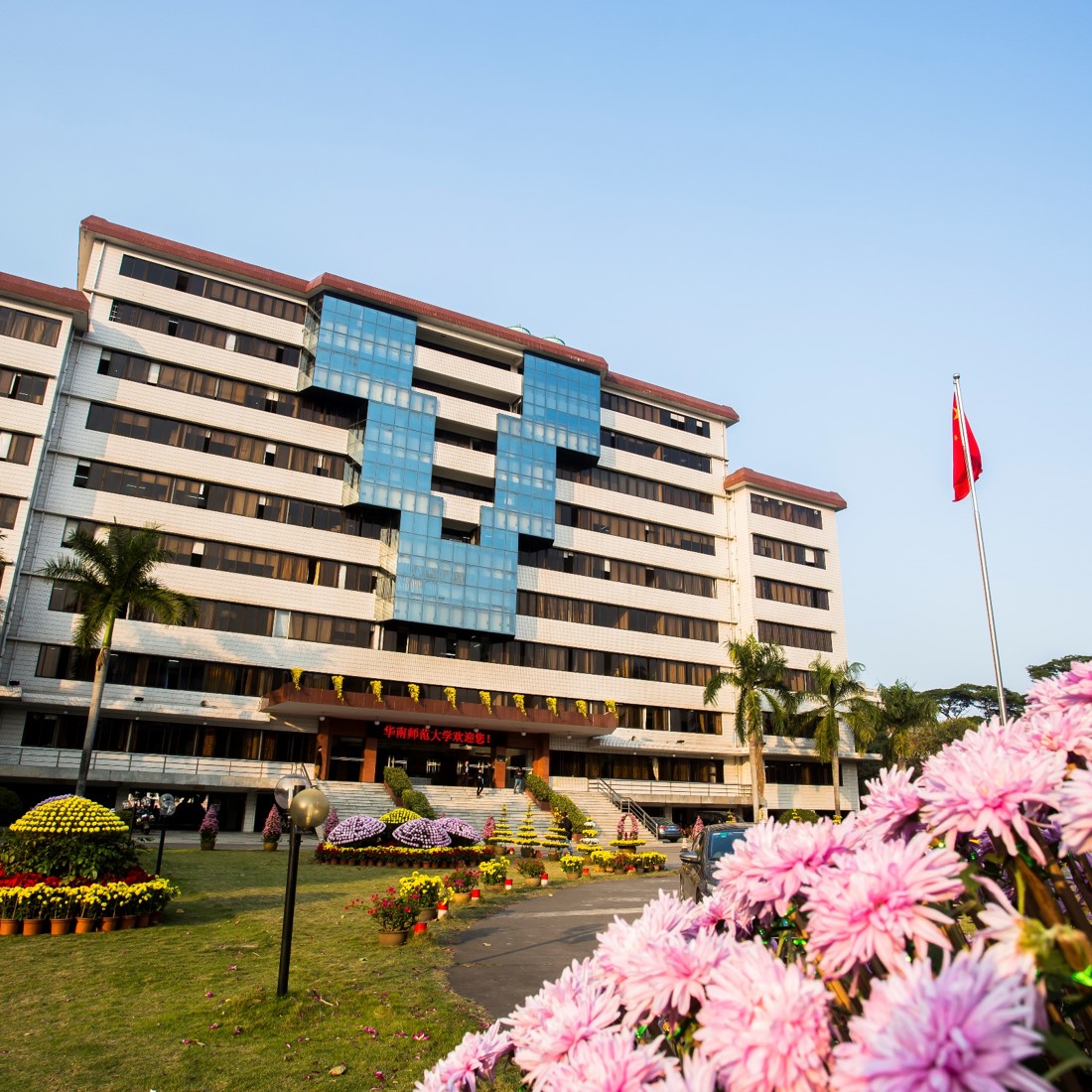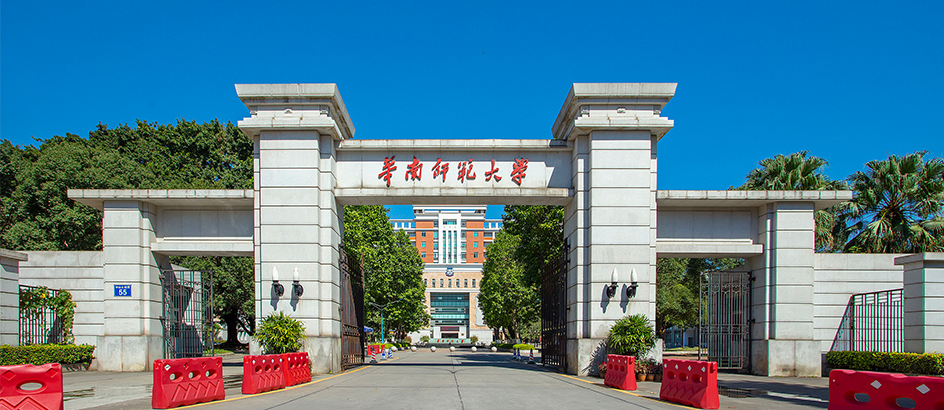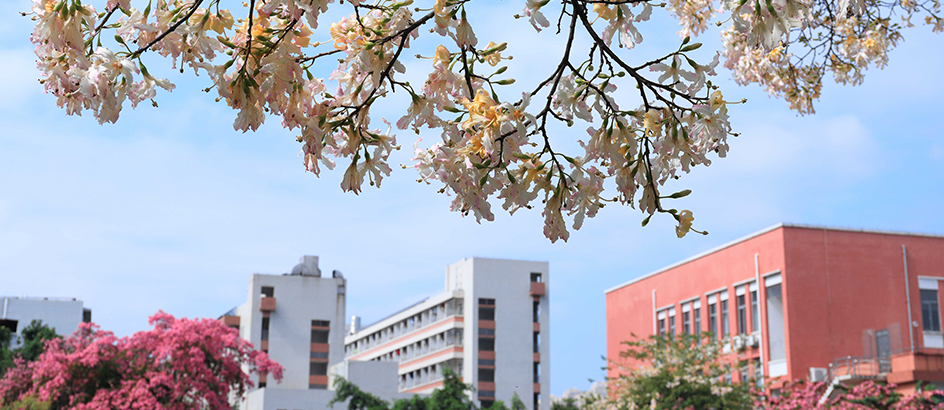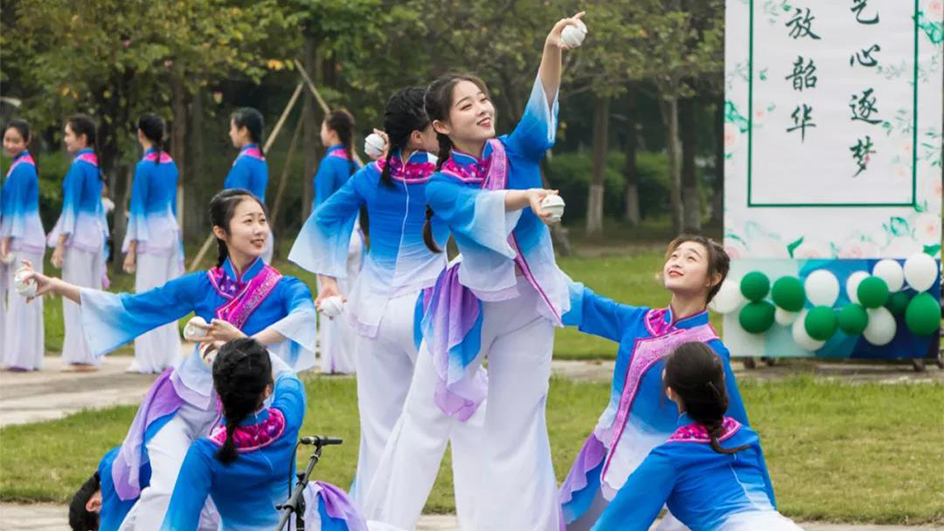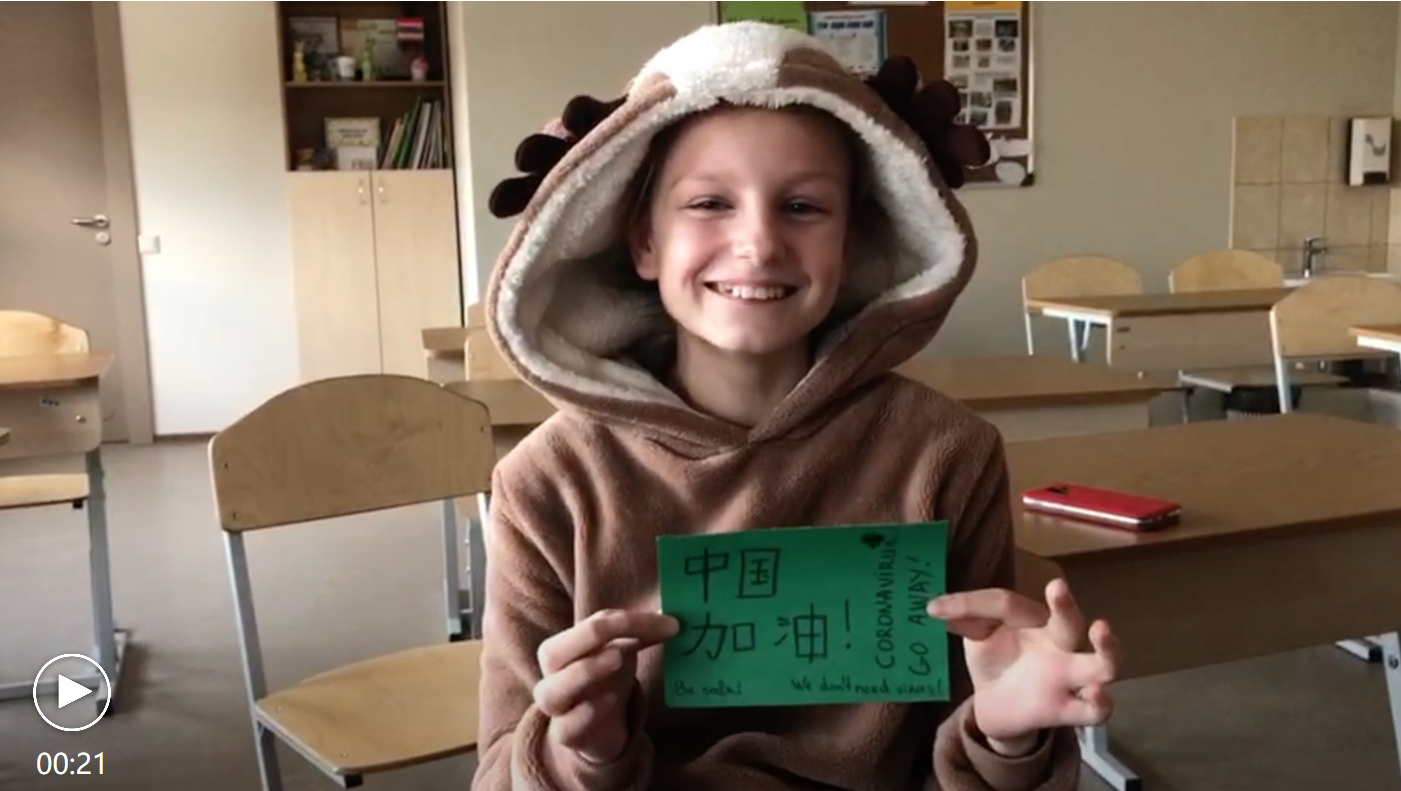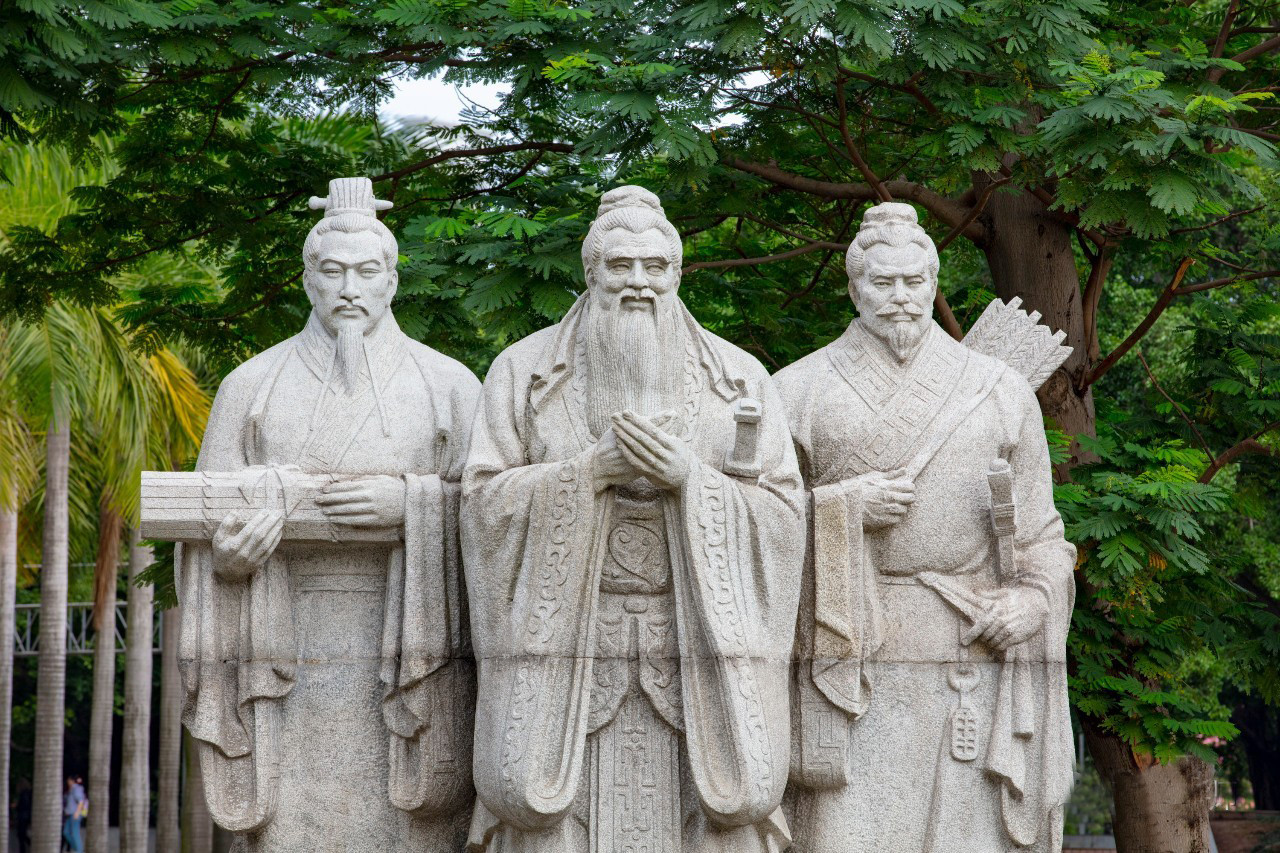
Likes
"The next station is South China Normal University." Getting off at the subway station of Line 3, we reach the Shipai campus of SCNU. What can we expect on a campus with such a long history? Let's go and see!
Exiting the subway, we reach the West Gate of the Shipai campus of SCNU. Going straight ahead, we can see a huge red building at the end of the road. That building is called the "Handball Gymnasium" because it was once the gymnasium for the handball games of the 6th National Games of the People's Republic of China. It also received many well-known celebrities, such as the world champions of table tennis, Wang Nan and Ma Lin. Now it is used as a hall for different ceremonies and grand events, such as commencements, the graduation ceremony of the School of Fine Arts, the Faculty Art Show, etc.

The Handball Gymnasiumit is used as a hall for different ceremonies and grand events now.
Turning right, we come to the statue of Confucius and two of his disciples, Yan Hui and Zilu, who stand behind him. Yan Hui is the one standing on the left, with bamboo slips in his hands, while Zilu is the one standing on the right, with arrows on his back. On the pedestal of the statue, there is a quotation from The Analects of Confucius meaning "Be insatiable in learning and tireless in teaching". It is said that the statue which features Confucius and his two disciples is the first of its kind in China. It explicitly shows the characteristics of a teacher training university and the school motto of being "a model of virtue for others".

The statue of Confucius(in the middle) and two of his disciples, Yanhui (on the left) and Zilu (on the right)
Behind the statue is the Culture Square. Previously being a sandy playground, the square was built with the intention of making a more proper arrangement of the campus and increase the green area on the campus by planting trees and a small grove. At the entrance of the square, there is a long pathway called "The Light of Science". Its name is carved on the wall by Qi Gong, a famous artist and educator in China, together with inscriptions of the words of 140 academicians. What's special about the square is that it has a sunken plaza which serves as a stage for teachers and students to show their talents on special occasions. Every morning, some senior citizens will come and practice Taiji or play musical instruments.
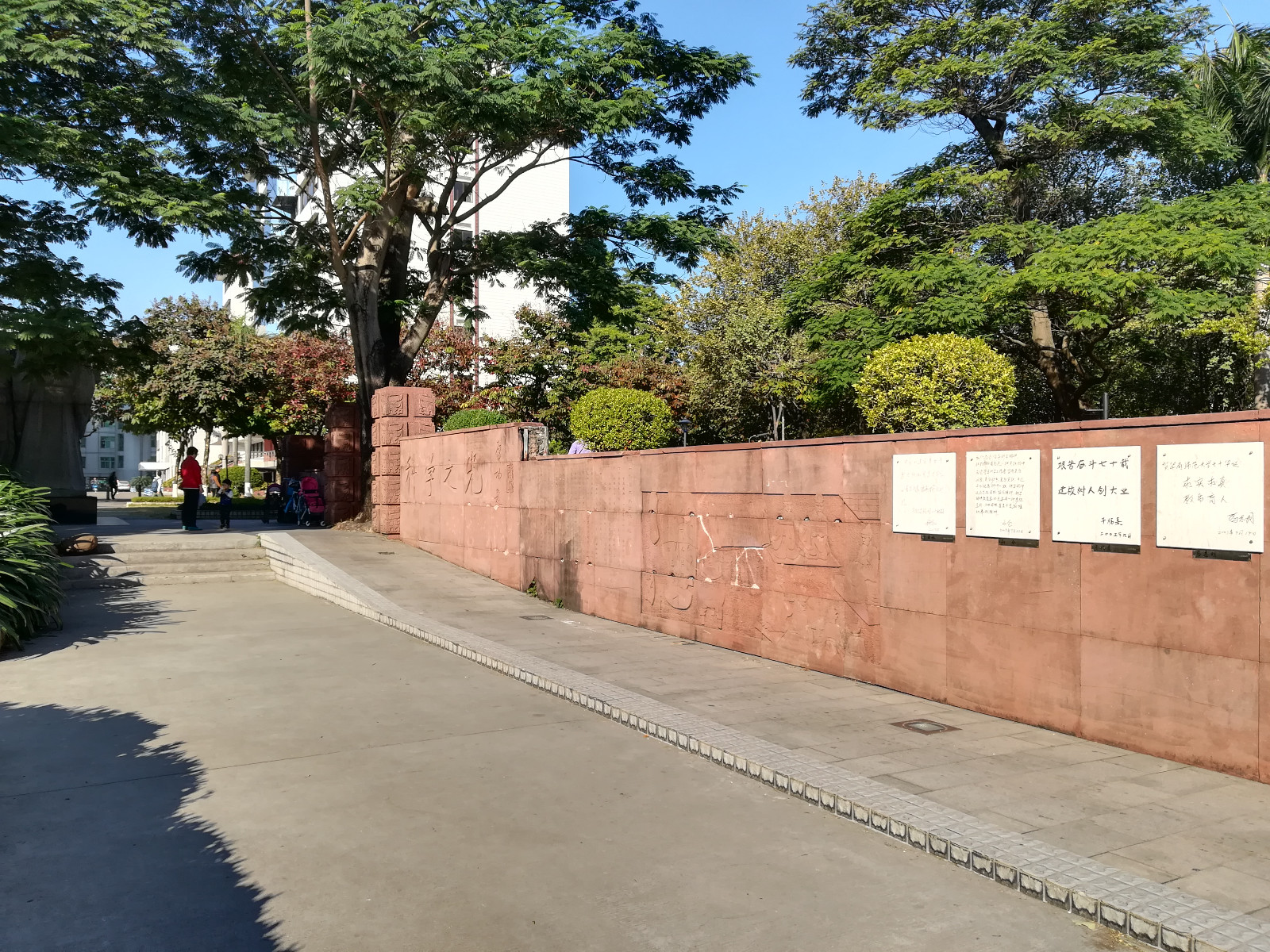
Apart from its name, inscriptions of the words of 140 academicians are also on the long pathway named "The Light of Science".
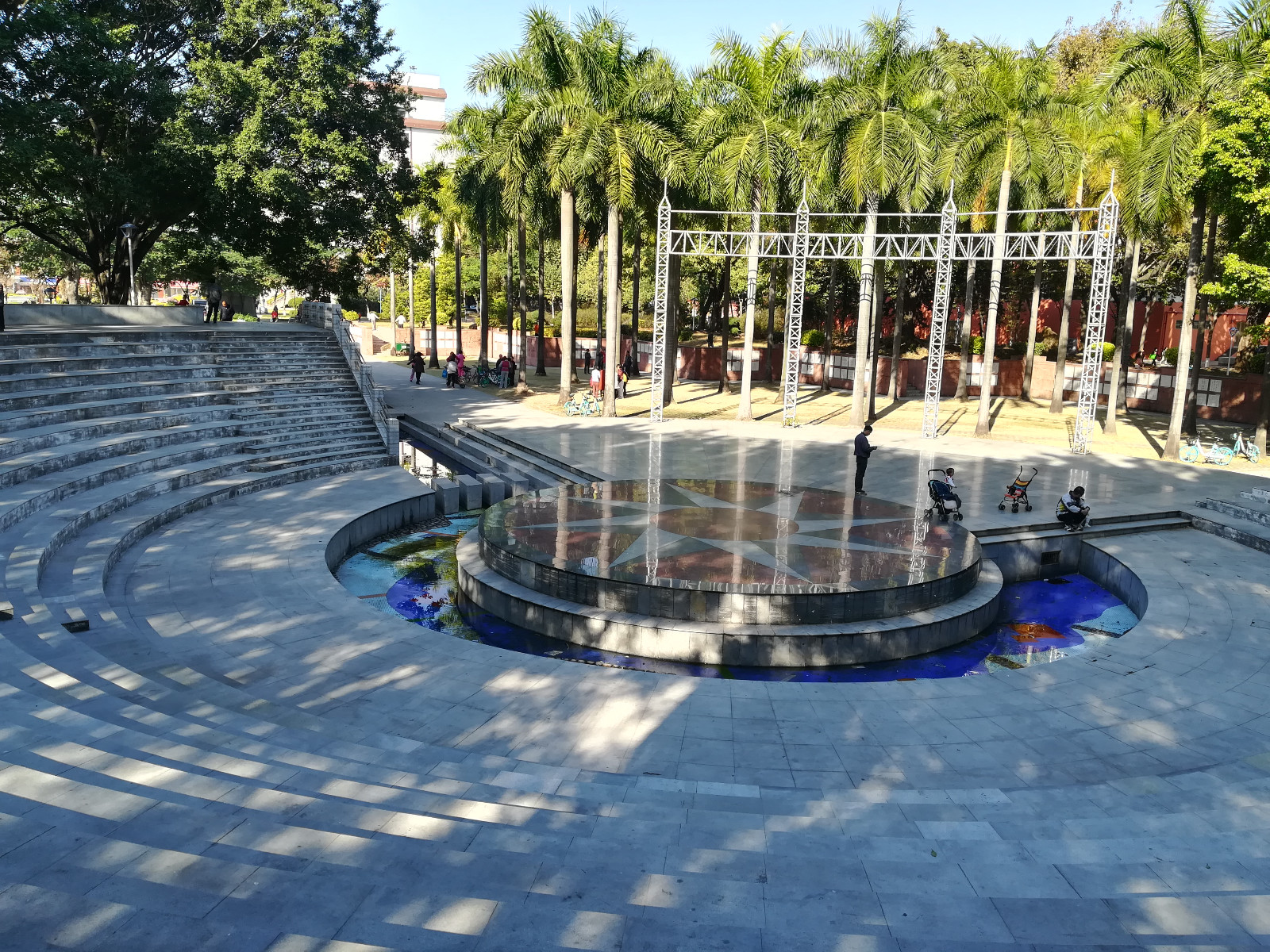
There are seats around the sunken plaza.
Turning at the next corner, we enter a wide and straight road with a line of Bauhinia trees on both sides. Every autumn, the trees bloom with a sea of purple blossoms, and the fallen flowers form an elegant purple carpet on the sidewalk. In a cool autumn breeze, it's enjoyable to walk under such beautiful flowers. As we walk farther, the First Teaching Building comes into our sight. When it was first built in 1950s, it was a typical Soviet-style building and was once dubbed as "the small Kremlin" by the students. The building we see now was a new building built on the previous site of the old one in 2001 and was taken into use in 2003 until now. Consisting of four wings, it has now become the major place for students to take lessons on the Shipai campus.
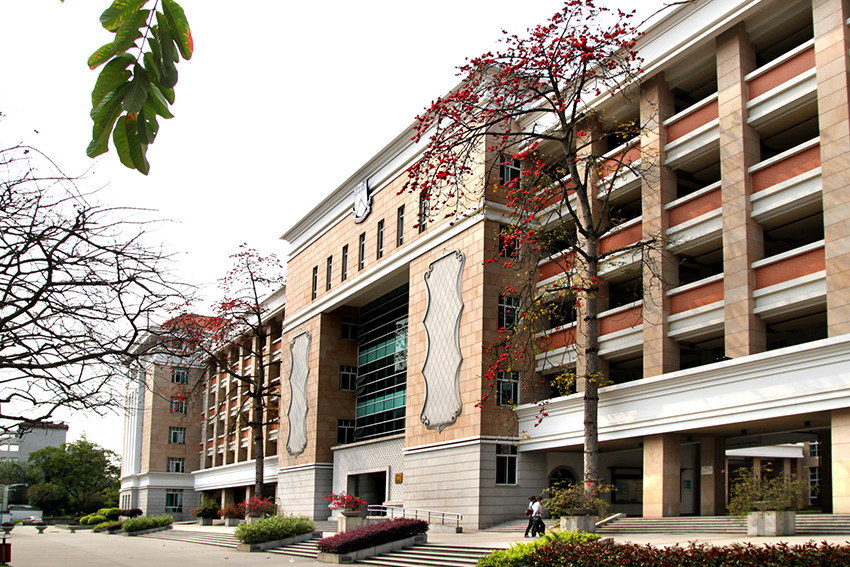
The south gate of the First Teaching Building
Passing the canteen named"Tao Yuan", we see the statue of Tao Xingzhi, a patriotic educator who devoted all his life to innovating Chinese education and promoting mass education. With his body leaning forward, the statue represents the great educator's effort to be close to his audience. The statue was erected to celebrate the first Teachers' Day after the founding of the People's Republic of China. It shows that SCNU places high value on the spirits of Tao Xingzhi, which adds to its characteristic of a teacher training college.
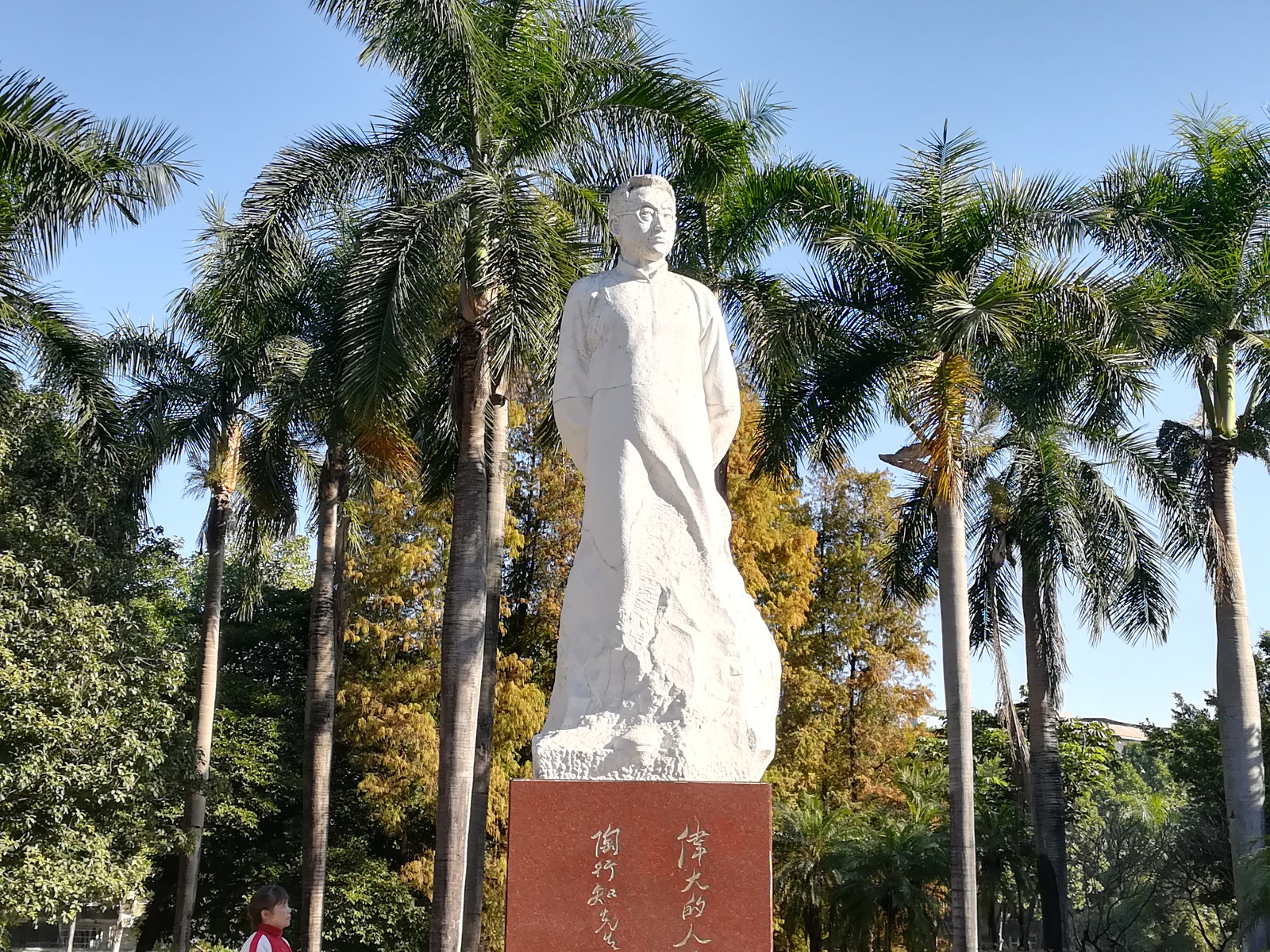
The statue of Tao Xingzhi
Viewed from the trees, there lies a delicate stone bridge across the West Lake. Dubbed the "Lover's Bridge", it connects two part of the campus separated by the lake. In summer, the lake is covered with fresh green lotus leaves, the lotus flowers swaying slightly in the breeze among the green leaves. Against the background of the lake and lotus, the white bridge appears classic and elegant.
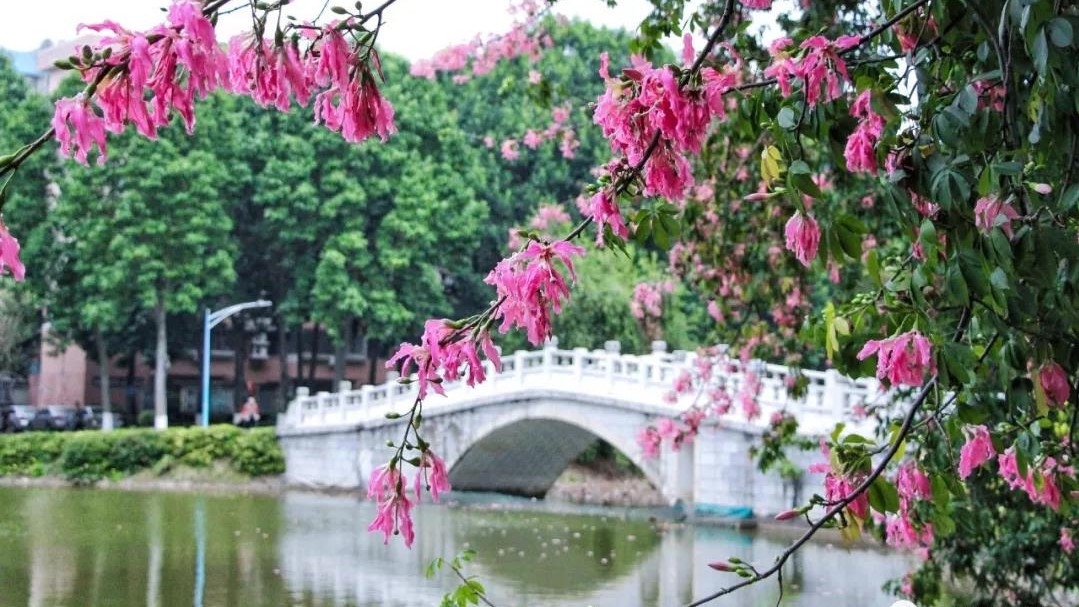
The white Lover's Bridge matches perfectly with the purple Ceiba speciosa flowers.
Following the clouds of purple flowers, we reach the botanical garden of the School of Life Sciences. Here stand some of the oldest Ceiba speciose trees of SCNU. Inside the garden, there is also an old Ceiba insignis tree which has white flowers like snow. Other Ceiba speciosa trees that line the roads in front of the faculty's apartments and other areas are all the descendants of these trees. In 1985, some small seedlings of these Ceiba speciosa trees were given to the former principal Pan Tonghua by Japanese experts at a forum. In full bloom, these Ceiba speciosa trees produce mass clusters of purple flowers every autumn and winter on the campus, attracting many teachers, students and even visitors from outside of the school to stop by for them. As a result, Ceiba speciosa flowers have become a famous attraction at SCNU and a signal to another beautiful autumn in SCNU.
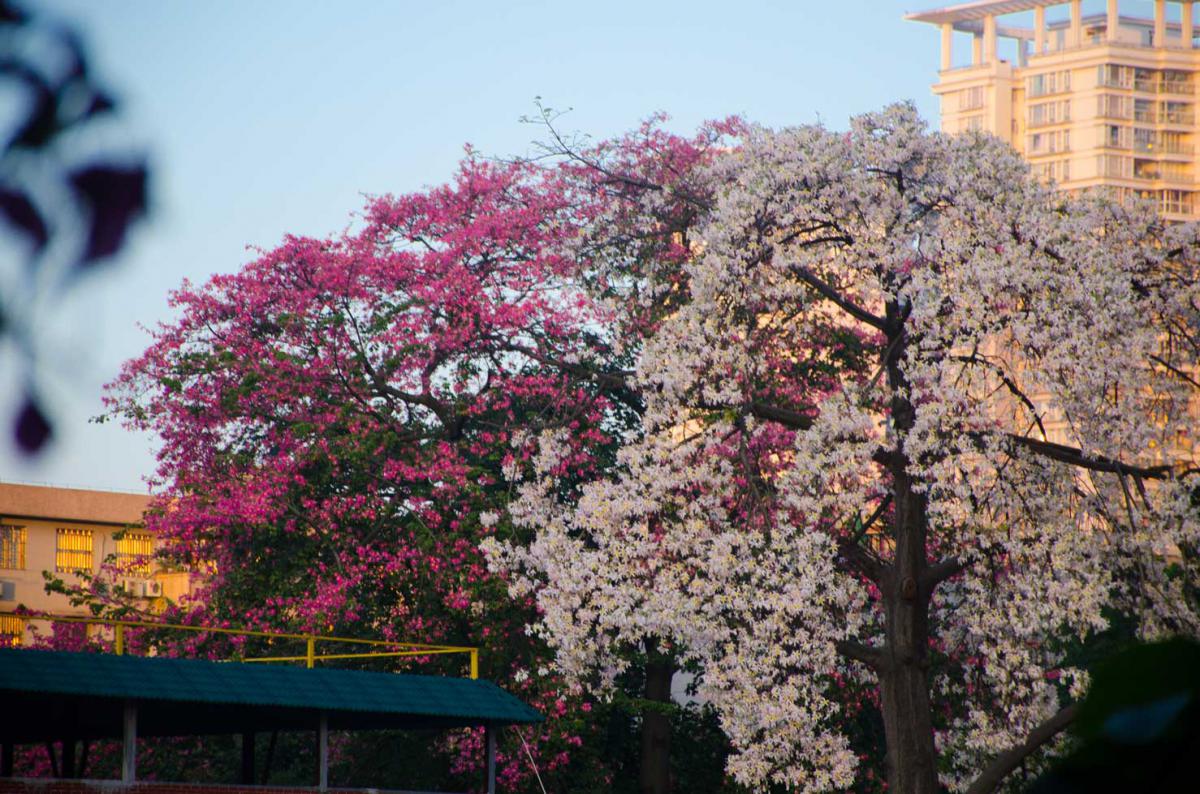
One of the Ceiba speciose trees and the Ceiba insignis tree in the botanical garden
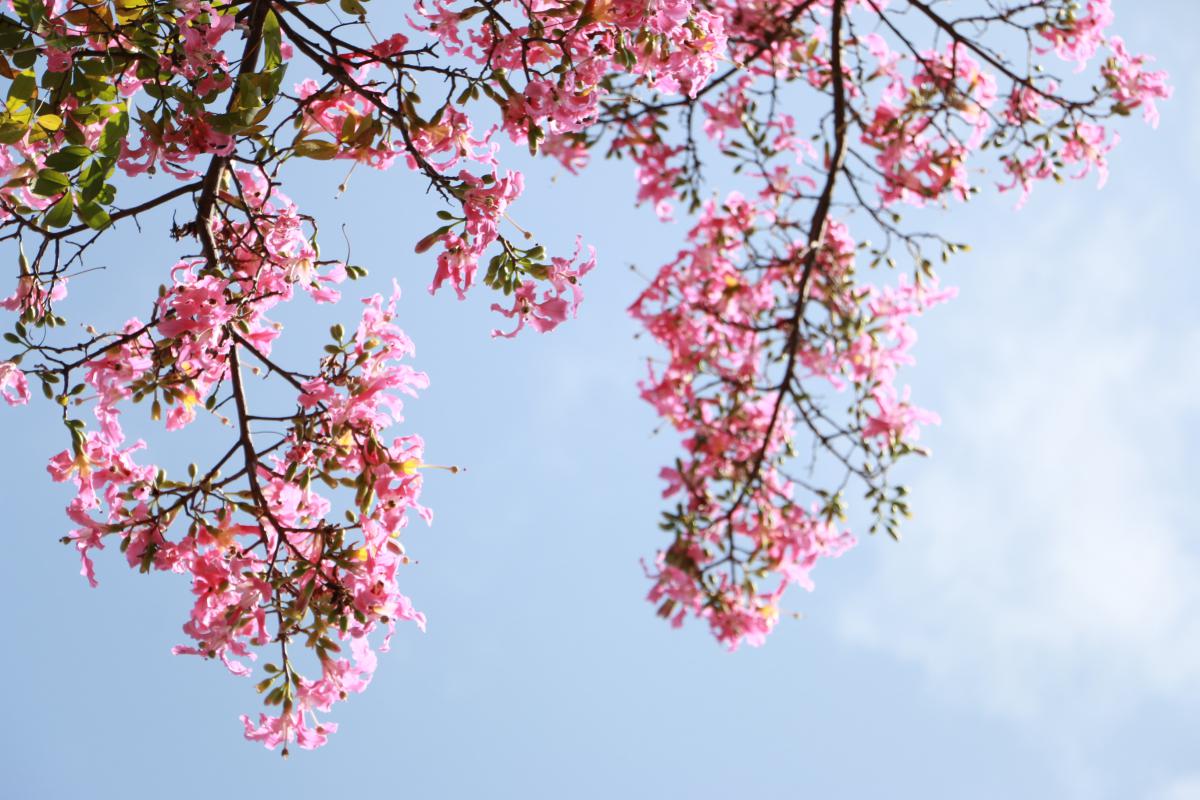
A closer look of the Ceiba speciose flowers
As a student at SCNU, what is valuable to us is not only the scenery itself, but the stories and culture with it. We are here waiting for you to explore the beauty and stories of SCNU at the next turn!
Source: from the Wechat official account Goodnight SCNU and the News Centre
Written and translated by Long Yuchen
Proofread by Edwin Baak
Edited/ Reviewed by Li Jianru
What to read next:




